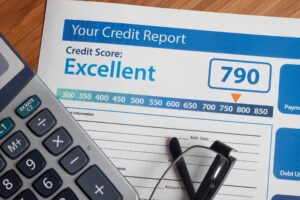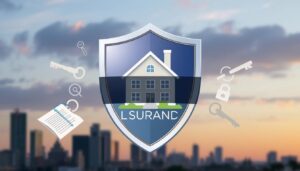**Title: Understanding Open-End Mortgages: Should You Consider One for Your Home Purchase?**
**Introduction**
Purchasing a home involves more than just the listing price. Beyond the down payment, closing costs, and moving expenses, new homeowners often face additional costs for home improvements. While many opt to use high-interest credit cards for these expenses, an open-end mortgage could be a more viable option. Although O1ne Mortgage Inc. does not offer open-end mortgages, understanding this type of loan can help you make informed decisions. Let’s explore what open-end mortgages are, how they work, and their pros and cons.
**What Is an Open-End Mortgage?**
An open-end mortgage allows borrowers to take out the maximum loan amount they qualify for, covering both the home purchase and future home improvements. The unused portion, known as “future advances,” becomes available after the real estate transaction is complete. Interest is only charged on the money used, making it a flexible option for those planning significant renovations.
**How Does an Open-End Mortgage Work?**
Open-end mortgages are particularly useful for buying fixer-uppers. For example, if you’re approved for a $400,000 loan but purchase a home for $300,000, you can use the remaining $100,000 for renovations. You only pay interest on the amount you actually use, not the full loan amount. However, it’s important to note that open-end mortgages are not available in every state.
**Pros and Cons of Open-End Mortgages**
**Pros:**
1. **Single Monthly Payment**: One loan covers both the home purchase and renovations, simplifying your finances.
2. **Funds for Renovations**: You have immediate access to funds for home improvements, eliminating the need for additional loans.
3. **Single Application Process**: You only go through the mortgage application process once, saving time and effort.
4. **Interest on Used Funds Only**: You only pay interest on the money you actually borrow, not the total approved amount.
**Cons:**
1. **Limited Availability**: Not all states or lenders offer open-end mortgages.
2. **Affordability Concerns**: Preapproval amounts may not align with your budget, so it’s crucial to assess your financial situation independently.
3. **Fixed Borrowing Limit**: You can’t increase your loan amount without reapplying.
4. **Draw Period Limitations**: The draw period may encourage taking on more debt than you’re ready for.
**Who Qualifies for Open-End Mortgages?**
The application process for an open-end mortgage is similar to that of a traditional mortgage. You’ll need proof of income, employment, and a list of assets. Lenders will also check your credit score. General requirements include:
– A credit score of 620 or higher
– A debt-to-income ratio (DTI) of 43% or less
– A loan-to-value ratio (LTV) of 80% or less
**Cost Considerations**
Open-end mortgages may cost more over the loan term. Factors to consider include:
– **Conforming vs. Non-Conforming Loans**: Conforming loans generally cost less than non-conforming loans.
– **Interest Rates**: Compare interest rates on open-end mortgages with other loan products like cash-out refinances, home equity loans, and HELOCs.
**Alternatives to Open-End Mortgages**
If an open-end mortgage isn’t available, consider these alternatives:
1. **Fannie Mae HomeStyle Loan**: Funds are distributed at closing, and additional funds for renovations are accessed through an approved contractor.
2. **FHA 203(k) Loan**: Combines a home purchase loan with a renovation loan, ideal for buyers with less-than-perfect credit.
3. **VA Renovation Loan**: Available to eligible service members and surviving spouses, combining home purchase and renovation costs.
4. **USDA Section 504 Home Repair Program**: Offers loans for home repairs and upgrades for qualified USDA borrowers.
**FAQs**
**Whats the difference between a traditional mortgage and an open-end mortgage?**
A traditional mortgage is a single lump sum for the home purchase, while an open-end mortgage allows for additional funds for renovations.
**Who offers open-end loans?**
Open-end mortgages are not widely available. If you can’t find a lender, consider working with a mortgage broker.
**What is an open-end mortgage deed?**
The deed must accurately reflect the debt owed, requiring a special type of deed for open-end loans.
**Conclusion**
An open-end mortgage can be a valuable tool for purchasing a fixer-upper and funding renovations. If this option isn’t available in your state, explore traditional mortgages, government-backed loan programs, or refinancing options. Ready to apply for a mortgage? Start the approval process with O1ne Mortgage Inc. today by visiting [O1ne Mortgage Inc.](https://o1nemortgage.com) or calling 888-372-8820.
**Keywords:** open-end mortgage, home improvements, mortgage loan, home renovation, mortgage application, O1ne Mortgage Inc., home financing options, mortgage approval, home equity loan, FHA 203(k) loan, VA renovation loan, USDA home repair program.
Debt Consolidation
1. Home Equity Loans 2. Debt Consolidation 3. Home Equity Line of Credit (HELOC) 4. Cash-Out Refinance 5. Personal Loans







